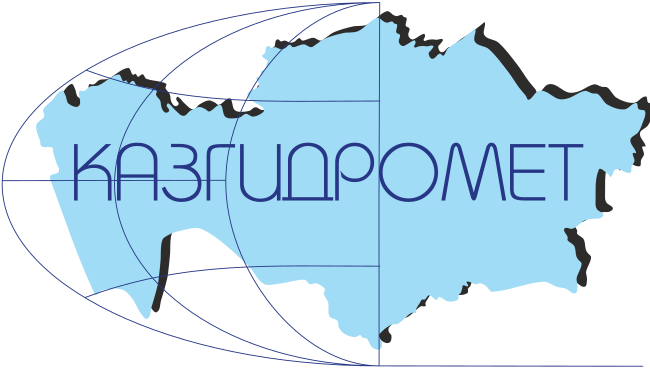USING HYDROLOGICAL MODEL HBV FOR FORECASTING RIVER DISCHARGE ON THE EXAMPLE OF THE LATERAL WATER FLOW TO THE SHULBI RESERVOIR
Keywords:
hydrological modelling, conceptual model HBV, calibration, spring flood, short-term runoff forecast, Shulbi reservoirAbstract
The article shows short-term runoff forecasting with using hydrological model HBV on the example of the lateral water flow to the Shulbi reservoir that methods of measurements and forecasting water inflow, which developed in last century are outdated in scientifically and methodically due to changes in input parameters taking into account climate change. The article provides a brief description of the model, hydrometeorological input data and digital elevation model data, also given information about glacial components and their processing on the ArcGIS information platform. For calculating of model’s efficiency, used the NashSutcliffe Efficiency. The model was calibrated for the period 1978…2018 and were selected the periods with the best results of calibrating for runoff of the Oba and Ulbi rivers, which make up the total literal tributary to the Shulbi reservoir. The calibration results of the selection of the best parameters the efficiency of the models amounted 0.908…0.922, respectively. The results of a short-term runoff forecast, with using calibration parameters, for a lead time of 1 day, 3 and 7 days, showed good indicators of forecasting quality. The forecast predictability for 1 day was 81 %, 3 day – 80 %, 7 day – 77 %. Preparation of a short term forecast of runoff of the Oba and Ulbi rivers using numerical forecasting methods is an important factor in improving the management
References
Болатова А.А., Тілләкәрім Т.А., М.Н. Раимжанова, Серікбай Н.Т., Багитова Б.Е., Болатов К.М. Результаты калибрования гидрологической модели HBV для горных рек Казахстана // Гидрометеорология и экология. – 2018. – № 3. – С. 110-124.
Браславский А.П. Нормы испарения с поверхности водохранилищ //А.П. Браславский, З.А. Викулина. – Л.: Гидрометеоиздат, 1954. – 212 с.
Виноградов Ю.Б. Математическое моделирование процессов формирования стока. – Л.: Гидрометеоиздат, 1988. – 311 с.
Водные ресурсы Казахстана: оценка, прогноз, управление, Т. VII, Кн. 1: Возобнавляемые ресурсы поверхностных вод западного, северного, центрального и восточного Казахстана/ под науч. ред. Р.И. Гальперина. – Алматы: ТОО «Арко», 2012. – 684 с.
Ежегодные данные о режиме и ресурсах поверхностных вод суши, Бассейны рек Иртыш, Ишим и Тобол (верхнее течение), Вып. 1, Ч. 1, ГВК РК РГП «Казгидромет», 1978-2018.
Официальный сайт Геологической службы США. [Электрон. ресурс] URL: https://earthexplorer.usgs.gov/ (дата обращения: 09.11.2017).
Официальный сайт GLIMS: глобального измерения сухопутного льда из космоса [Электрон. ресурс] URL: https://www.glims.org/ (дата обращения: 10.11.2018).
Ресурсы поверхностных вод СССР. – Т. 15.Алтай и Западная Сибирь. - Вып. 1. Горный Алтай и Верхний Иртыш. – Л.: Гидрометеоиздат, 1969. - 318 с.
Gayathri K Devi, Ganasri B.P., Dwarakish G.S. A Review on Hydrological Models / International conference on water resources, Coastal and ocean engineering (ICWRCOE 2015), Aquatic Procedia. – № 4. – 2015.– P. 1001-1007.
Georgakakos P.K.; Hudlow, M.D., Quantitative Precipitation Forecast Techniques for use in Hydrological Forecasting // Bull. Am. Meteorol. Soc. – 1984. – № 65. – P.1186-1200.
Jan Seibert. HBV light version 2, User’s Manual. Stockholm University, Department of Physical Geography and Quaternary Geology. – 2005. – 32 p.
Jan Seibert, M.J. Vis Teaching hydrological modeling with a user-friendly catchment-runoff-model software package // Hydrol. Earth System Sciences. – 2012. – № 16. – P. 3315–3325.
Jan Seibert. Multi-criteria calibration of conceptual runoff model using a genetic algorithm // Hydrology and Earth Sciences. – 2000. – № 4(2). – P. 215-224.
Jia Q.Y., Sun F.H. Modeling and forecasting process using the HBV model in Liao river delta / The 18th Biennial Conference of International Society for Ecological Modelling, Environmental Sciences. – 2012. – № 8. – P. 122–128.
Kauffeldt A., Wetterhall F., Pappenberger F., Salamon P., Thielen J. Technical review of large-scale hydrological models for implementation in operational flood forecasting schemes on continental level // Environmental Modelling & Software. – 2016. – № 75. – P. 68-76.
Kim N. W.; Jung Y.; Lee J. E. Spatial propagation of streamflow data in ungauged watersheds using a lumped conceptual model // Journal of Water and Climate Change. – 2018. – № 10 (1). – P. 89-101.
Merkuryeva G., Merkuryev Y., Boris V. Sokolov, Potryasaev S., Zelentsov Viacheslav A., Lektauers A. Advanced river flood monitoring, modelling and forecasting // Journal of Computational Sciences. – 2015. – № 10. – P.77-85p.
Nash J.E., Sutcliffe J.V. River flow forecasting through conceptual models, part 1-a discussion of principles // Journal of Hydrology. – Amsterdam, 1970. – № 10. – P. 282-290.
Reynolds J.E., Halldin S., Xu C.Y., Seibert J., Kauffeldt A. Sub-daily runoff predictions using parameters calibrated on the basis of data with a daily temporal resolution // Journal of Hydrology. – 2017. – № 550. – P. 399-411.
Spivak L., Arkhipkin O., Pankratov V., Vitkovskaya I., Sagatdinova G. Space monitoring of floods in Kazakhstan // Mathematics and Computers in Simulation. – 2004. – Vol. 67, Issues 4–5, 3. – P. 365-370.
Sten Bergström, 1992. The HBV model – its structure and applications SMHI RH, №4, April 1992. 35 p.
Tucci C., Collischonn W. Flood forecasting // WMO Bull. – 2006. – № 55 (3). – P.179–184.
Valent P., Szolgay J., Riverso C. Assessment of the uncertainties of a conceptual hydrologic model by using artificially generated flows // Slovak journal of civil engineering. – 2012. – Vol. XX. – № 4. – P. 35-43.
Vormoor K., Heistermann M., Bronstert A., Lawrence D. Hydrological model parameter (in) stbility – “crash testing” the HBV model under contrasting flood seasonality conditions // Hydrological Sciences journal. - 2018. – Vol. 63. – № 7. – P. 991–1007.
WMO, 1986. Intercomparison of models of snowmelt runoff. Operational Hydrology. Report № 23. – 1986, WMO-№ 646. – 482 p.
WMO, 2002. Carlos E.M. Tucci Flood flow forecasting, Institute of Hydraulic Research, Federal University of Rio Grande do Sul, 35 p.
Guide to Hydrological Practices. Volume II. Management of Water Resources and Application of Hydrological Practices, WMO № 168, Sixth edition, 2009. – 302 p.





